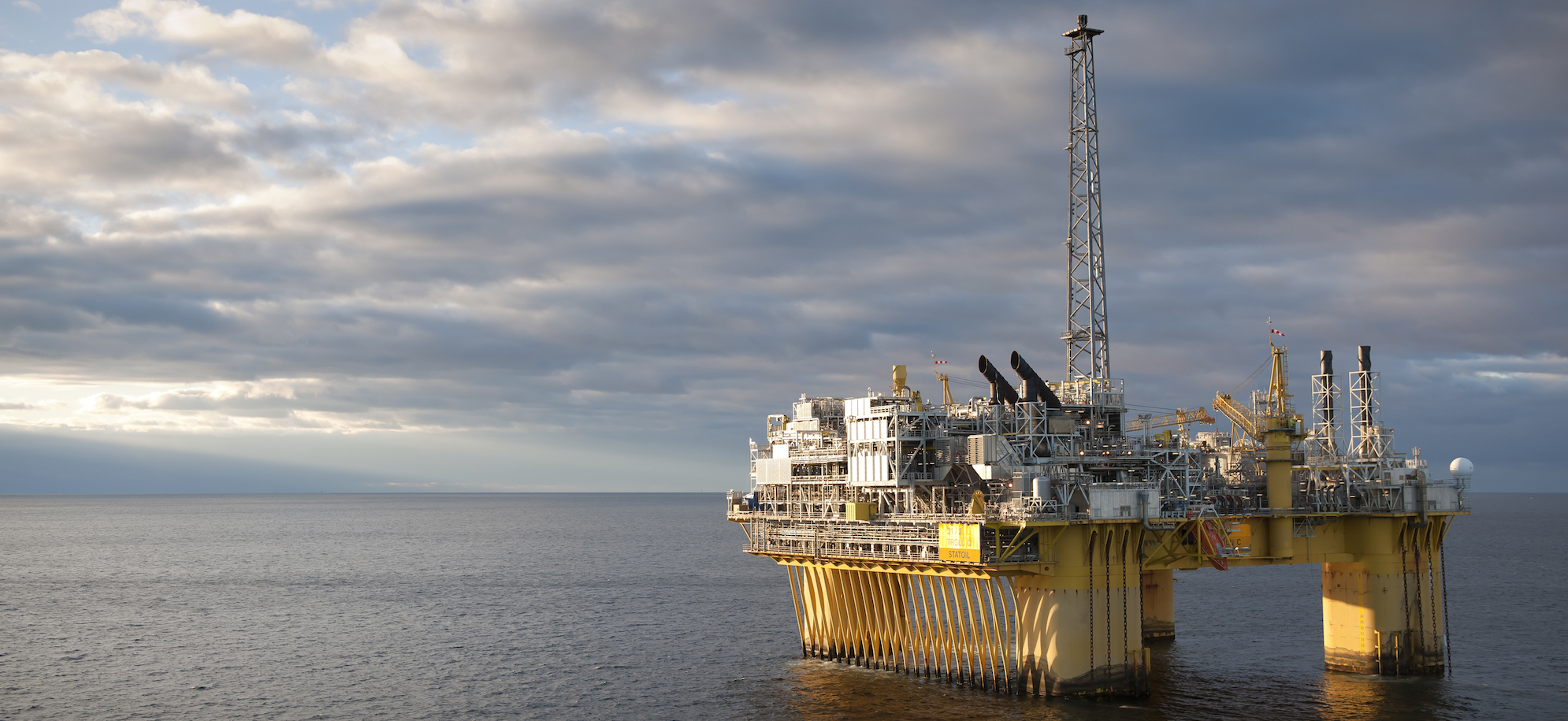
Equinor says it is hoping to supply three of its offshore platforms currently powered by gas turbines with electricity from onshore. The switch could cut CO2 emissions from Troll C and Sleipner area by over 600,000 tonnes per year. Equinor photo by Øyvind Hagen.
Equinor looks to power offshore platforms Troll C and in the Sleipner area with electricity from land
Equinor, along with its partners, is looking at the possibility of supplying power from land to three platforms that are currently powered by gas turbines. The transition may cut CO2 emissions from the selected platforms by over than 600,000 tonnes per year.
The platforms that may be powered from land are Troll C and the Sleipner field centre that includes the Gudrun tie-in platform in the North Sea.
“Equinor’s ambition is to maintain our position as one of the world’s most carbon-efficient oil and gas producers”, said Arne Sigve Nylund, Equinor’s executive vice president for the Norwegian continental shelf (NCS).
Nylund added that if the company succeeds in this goal, “we will further improve our ability to deliver safe operations with high value creation and low carbon emissions from fields we operate on the Norwegian continental shelf”.
On the Troll C offshore platform, the CO2 emission reduction potential is 365,000 tonnes per year by platform electrification. Electrification of the Sleipner field centre and Gudrun, which is powered from Sleipner, has the potential for reducing emissions by 250,000 tonnes per year.
According to the company, electrification of these platforms may also lead to annual reductions of NOx emissions by around 2500 tonnes.
“Adding this to reductions that will be achieved by choosing land-based power supply to Johan Sverdrup, Gina Krog and Martin Linge, we see the potential for cutting more than 1.3 million tonnes of CO2 in total per year,” said Nylund.
He added that this is the equivalent annual emissions from over 650,000 cars, or about every fourth private car on Norwegian roadways.
The electrification plans follow a mapping study that Equinor has made of own-operated NCS fields. The mapping identified Troll C and the Sleipner field centre, including the Gudrun platform, as the most suitable electrification candidates for further consideration.
“Powering major offshore oil and gas installations from land is no easy task,” says Nylund.
There are financial and technical challenges and a number of the company’s offshore platforms are located in areas with no possibility for tying in to land-based power supply.
“The reason why we are looking at the potential for land-based power to Troll C and the Sleipner area is that they can utilize existing power supply infrastructure, they have large remaining resources and the measures will lead to considerable CO2 reductions,” continues Nylund.
All three offshore platforms are in field areas that are already receiving power from land.
On the Troll field the Troll A gas platform has been powered from land since it came on stream in 1996, and is operated with minimal production emissions. The aim going forward is to find a solution for tying Troll C to the same power solution by a power cable from the Kollsnes plant by Bergen.
The Johan Sverdrup field will be powered from sources on land, together with several fields on the Utsira High, including Equinor’s Gina Krog field, which came on stream last year. Possibilities for extending the power supply from Gina Krog are being pursued, with the aim of connecting the Sleipner field centre and the Gudrun platform to the land-based power supply.
Securing profitability is central to succeed in realising such projects, and support from the Business Sectors NOx fund will be an important contribution.
Nylund underlines that much work and analyses, both of technical and economic assumptions, have yet to be done before electrification on Troll C and Sleipner field centre can be decided by the partnerships.
The electrification plans require close and targeted collaboration between Equinor, partners and authorities to find good solutions from a technical and financial perspective.
In a press release, the company said “To secure long-term value-creation on the NCS, we must focus on reducing the CO2 footprint from our operations”.
Last year Equinor reached its goal of reducing annual CO2 emissions from the NCS by 1.2 million tonnes from 2008 to 2020, almost three years ahead of schedule. An now, the company is raising its ambitions and aims to reduce CO2 emissions from its offshore operations by a further 2 million tonnes per year by 2030.
“Results prove that it is possible to meet ambitious emission cuts when we combine expertise, technology and a will to find profitable energy solutions on the NCS. The electrification plans for Troll C and the Sleipner area give us an opportunity to mature further substantial reductions through good collaboration in the licences and with authorities and the industry at large,” says Nylund.


Be the first to comment